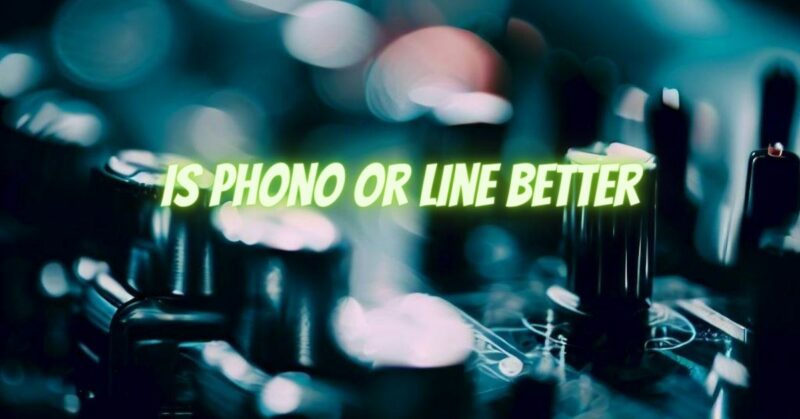The choice between using a phono preamp or a line preamp in audio systems has sparked ongoing debates among audio enthusiasts. Both options serve distinct purposes and offer different advantages. In this article, we dive into the phono vs. line preamp discussion, examining their key differences, functions, and helping you determine which option may be better suited for your specific audio setup and preferences.
- Understanding Phono Preamps: Phono preamps, also known as phono stages, are specifically designed to amplify the low-level signal produced by turntable cartridges. They apply the RIAA equalization curve, which compensates for the frequency response limitations of vinyl records during the mastering process. Phono preamps boost the signal to line level, making it compatible with other audio components.
- Exploring Line Preamps: Line preamps, on the other hand, are designed to amplify line-level signals from various audio sources, such as CD players, media players, or digital audio interfaces. They provide a clean and transparent amplification without the need for RIAA equalization. Line preamps are commonly used to connect audio sources directly to power amplifiers or active speakers.
- The Importance of RIAA Equalization: One significant difference between phono and line preamps is the inclusion of RIAA equalization in phono preamps. This equalization curve is crucial for vinyl playback, as it restores the natural frequency response of recordings. Line preamps do not have this equalization, as they handle line-level signals that have already been pre-equalized.
- Compatibility and Signal Levels: Phono preamps are essential when using turntables since the signal from the cartridge is considerably weaker than line-level signals. The phono preamp provides the necessary amplification to bring the signal to a standard line level. Line preamps, on the other hand, are designed to handle line-level signals directly and are compatible with a wide range of audio sources.
- Flexibility and Expansion Options: Using a line preamp offers greater flexibility in connecting multiple audio sources, such as CD players, media players, or digital devices. Line preamps often feature multiple input options and switching capabilities, allowing easy integration of various audio sources into your system. This versatility makes line preamps suitable for users who want to expand their audio setup beyond vinyl playback.
- Sonic Characteristics and Transparency: Phono preamps play a vital role in preserving the unique sound signature and tonal characteristics of vinyl records. They contribute to the warm and analog qualities associated with vinyl playback. Line preamps, on the other hand, focus on clean and transparent amplification, faithfully reproducing the original signal without coloration or modification.
- Personal Preference and System Requirements: The choice between phono and line preamps ultimately depends on personal preference, audio system requirements, and the specific sources you plan to connect. If you primarily listen to vinyl records, a dedicated phono preamp is essential. However, if you have a diverse range of audio sources and prefer a versatile and expandable setup, a line preamp may be a more suitable choice.
Conclusion:
The phono vs. line preamp debate revolves around the specific needs and preferences of audio enthusiasts. Phono preamps are essential for vinyl playback, providing RIAA equalization and amplification tailored to turntable cartridges. Line preamps offer versatility, transparency, and the ability to connect various audio sources directly to your system. Understanding the distinct functions and considering factors such as system requirements and personal taste will guide you towards choosing the preamp that best complements your audio setup and delivers the desired sound experience.


